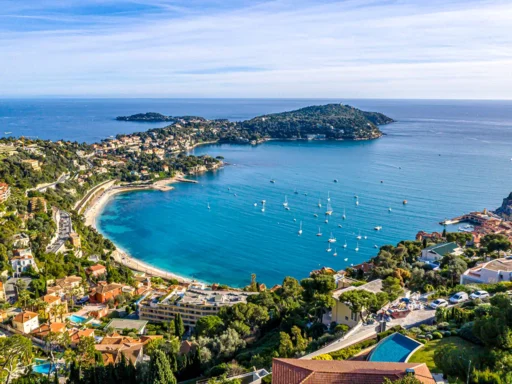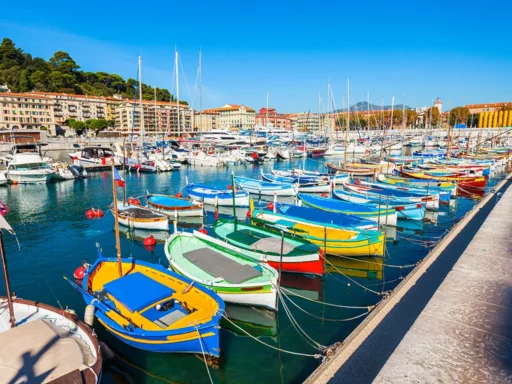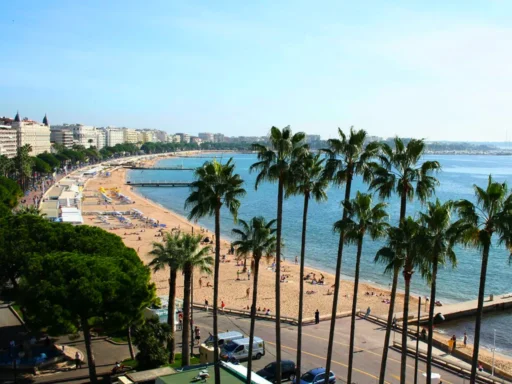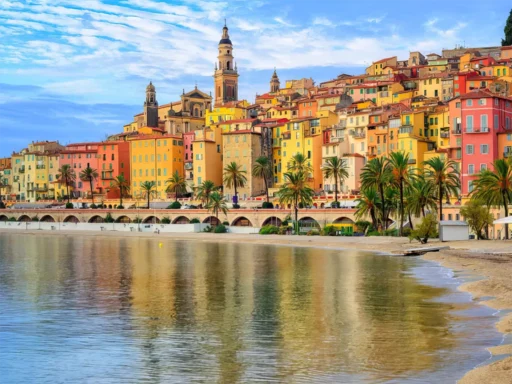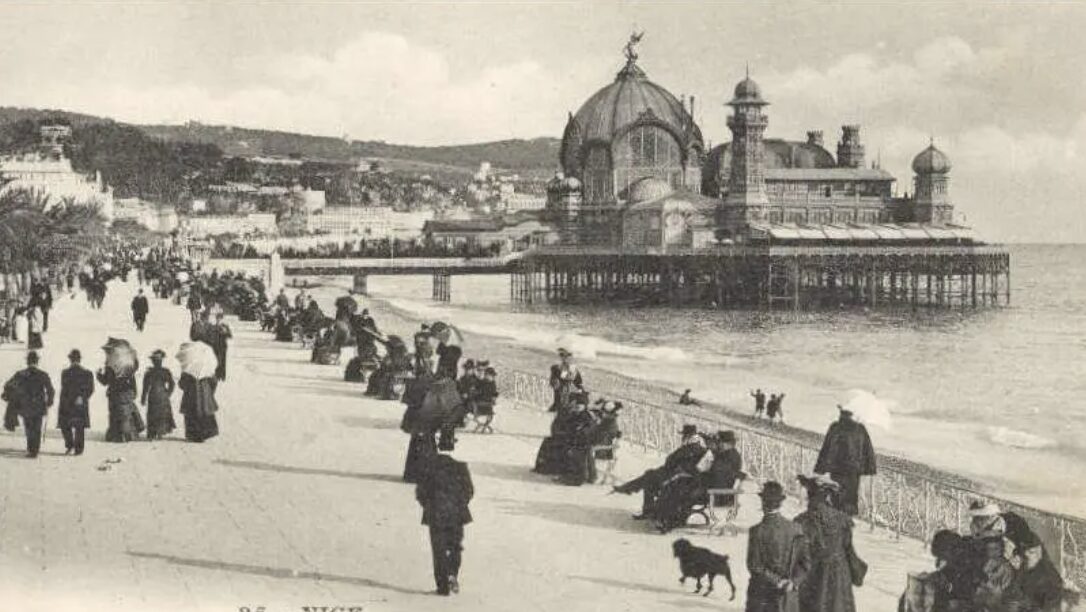The Promenade des Anglais is one of the most iconic seafront boulevards in the world. Stretching along the sparkling Mediterranean coastline of Nice, this historic promenade has captured the imagination of travelers for over two centuries. From its origins in the 1820s as a path funded by wealthy English visitors to the modern-day hub of luxury, culture, and Riviera glamour, the Promenade des Anglais offers a fascinating story of history, tradition, and elegance.
Whether you are strolling along the boulevard in the morning sun, watching the midday cannon fire, or simply admiring the azure waters, the Promenade des Anglais tells a story of vision, perseverance, and timeless beauty.
The English Origins of the Promenade des Anglais
The history of the Promenade des Anglais begins in the 1820s with the arrival of wealthy English aristocrats who wintered on the French Riviera to escape the harsh winters of northern Europe. The English community in Nice, led by Reverend Lewis Way, recognized the need for a safe and elegant path along the seafront where visitors could enjoy leisurely walks.
At that time, the coastline was rugged and often inaccessible, and the city’s residents welcomed the idea of a promenade that could both attract tourists and improve the area’s infrastructure. The English funded much of the initial construction, which is why the promenade bears the name “des Anglais”—literally, “of the English.”
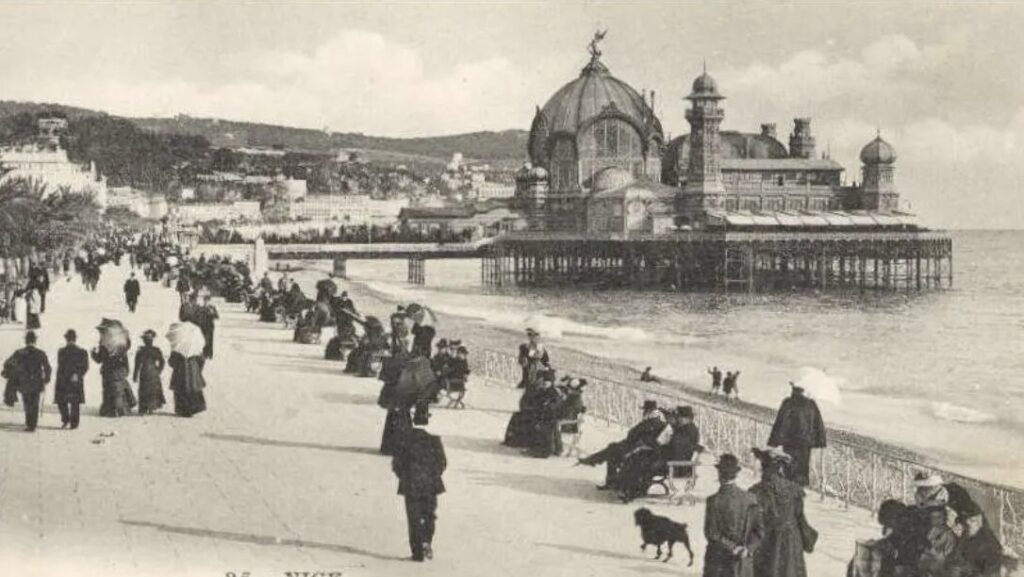
Construction and Early Design
The initial path was narrow and modest, designed primarily for horse-drawn carriages and foot traffic. It featured gravel walkways, benches, and ornamental lighting provided by the English community. Local laborers worked alongside English engineers to transform the coastline into a more welcoming and aesthetically pleasing promenade.
By the mid-19th century, the Promenade des Anglais had become the preferred spot for leisurely walks, social gatherings, and sunset viewing, firmly establishing its reputation as a symbol of elegance and cosmopolitan culture.
From Humble Path to Riviera Icon
When Nice became part of France in 1860, the Promenade des Anglais continued to flourish. The city recognized the promenade as a key cultural and touristic asset, expanding and improving it to accommodate the growing number of visitors.
Belle Époque Expansion
The late 19th century, known as the Belle Époque, was a transformative period for the Promenade des Anglais. Luxury hotels such as the Hotel Negresco, casinos, and elegant villas lined the boulevard. Visitors from across Europe flocked to the promenade to experience the glamour of the Riviera lifestyle.
The Belle Époque also saw improvements in infrastructure, including paved roads, wider sidewalks, and decorative street lighting. The Promenade des Anglais became synonymous with luxury, leisure, and the artistic culture of Nice, drawing painters, writers, and socialites who sought inspiration and beauty along the Mediterranean coast.
The Midday Cannon Tradition of Nice
One of the most unique features of the Promenade des Anglais is the midday cannon, known locally as the “cannon de midi.” This tradition dates back to the 19th century and was originally used to signal noon for sailors and locals.
Origins of the Noon Cannon
The cannon was fired from the Mont Boron hill, overlooking the city and the sea. Its sound marked the middle of the day, a practical tool for timekeeping in an era before widespread clocks. Tourists and locals alike began to view the cannon as a charming and distinctive feature of Nice.
The Tradition Today
Today, the cannon continues to fire daily at noon, attracting curious visitors who gather along the promenade to witness this historical ritual. The sound of the cannon is a reminder of Nice’s rich maritime history and the enduring influence of tradition on the city’s culture.
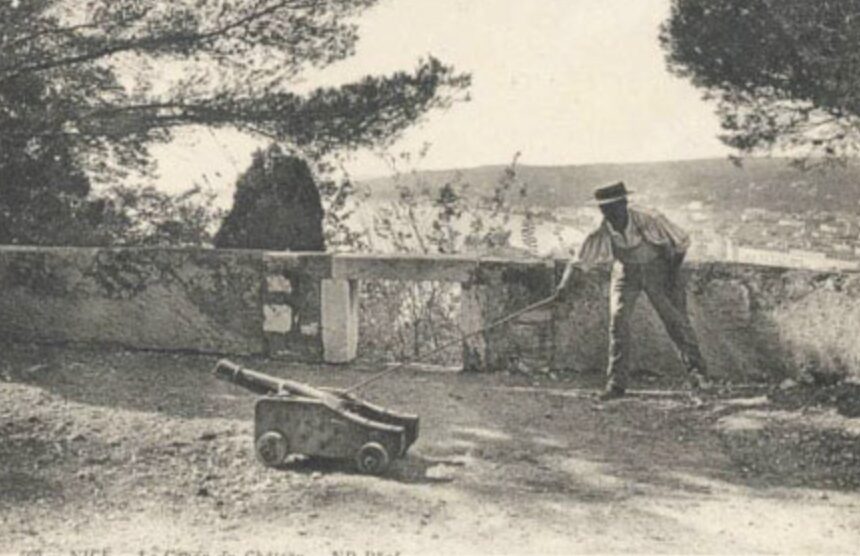
Promenade des Anglais During World Events
The Promenade des Anglais has witnessed the ebbs and flows of history, including wars, political changes, and social transformations. During World War I, the boulevard saw military parades and was partially repurposed for defense. In World War II, Nice was occupied, and the promenade was affected by bombings and restrictions, yet it remained a central part of civic life.
After the wars, restoration projects returned the Promenade des Anglais to its former glory, maintaining its role as a symbol of resilience, elegance, and continuity.
Cultural Significance and Festivals
The Promenade des Anglais is more than just a beautiful boulevard; it is a cultural hub. Each year, it hosts the Nice Carnival, one of Europe’s largest and most colorful festivals, with parades, music, and elaborate floats.
Other annual events include the Nice Marathon, public concerts, and spectacular fireworks displays. The promenade also appears in literature, films, and paintings, immortalizing its charm and elegance in popular culture.
Tourists and locals alike gather to enjoy these events, cementing the promenade’s role as the heartbeat of the city.
Things to Do on the Promenade des Anglais
The Promenade des Anglais offers endless activities for visitors of all ages.
Walking and Cycling
Walking or cycling along the promenade is the perfect way to enjoy the Mediterranean views, palm trees, and iconic blue chairs. The dedicated bike lanes and pedestrian paths make it safe and enjoyable.
Beach Activities
Visitors can relax on public or private beaches, swim in the azure waters, or enjoy water sports. The promenade is lined with beachfront cafés and restaurants, perfect for a leisurely lunch or sunset aperitif.
Historic Landmarks
Explore landmarks such as the Hotel Negresco, Villa Masséna, and Castle Hill, offering historical insight and panoramic views. The promenade’s blend of history, architecture, and natural beauty creates a truly immersive experience.

Modern Riviera Glamour
The Promenade des Anglais today represents the glamorous lifestyle of the French Riviera. Luxury yachts dot the coastline, high-end shops attract affluent visitors, and art galleries showcase the region’s cultural vibrancy.
Locals use the promenade for jogging, rollerblading, or social gatherings, blending everyday life with the sophistication and beauty of the Riviera. The boulevard embodies the perfect mix of history, culture, and leisure.
Conclusion
From its humble beginnings as a path funded by English visitors to its status as one of the most iconic promenades in the world, the Promenade des Anglais remains a symbol of Nice’s history, culture, and glamour. With its rich heritage, stunning coastal views, and lively traditions like the midday cannon, the promenade offers visitors an unforgettable experience.
Whether you are strolling along its palm-lined paths, enjoying the beaches, or exploring historic landmarks, the Promenade des Anglais invites you to witness the timeless elegance and spirit of the French Riviera.
